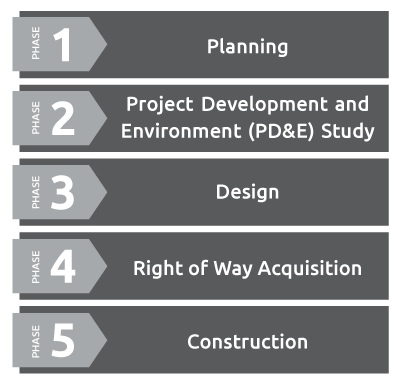The Florida Department of Transportation (FDOT) and Florida’s Turnpike Enterprise (FTE) routinely conduct studies that address existing and future traffic needs.
The FDOT project development process begins with planning studies and ends with a constructed project. This comprehensive process consists of five phases—Planning, Project Development and Environment (PD&E) Study, Design, Right of Way Acquisition, and Construction.


